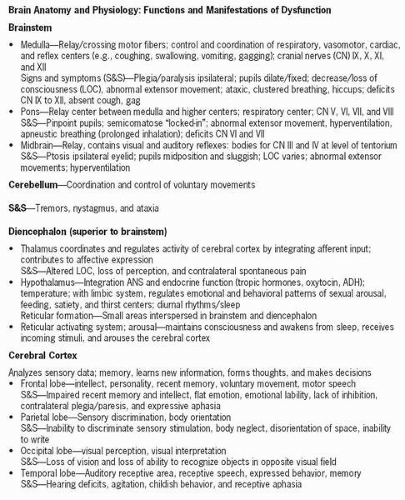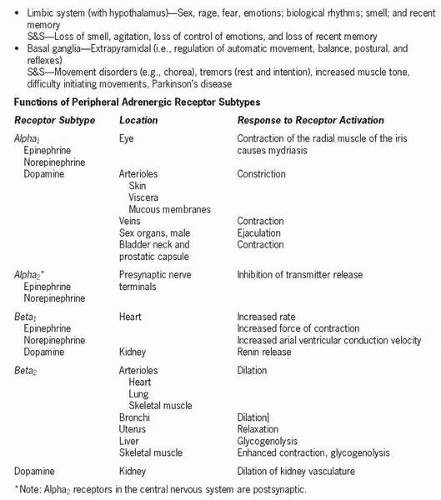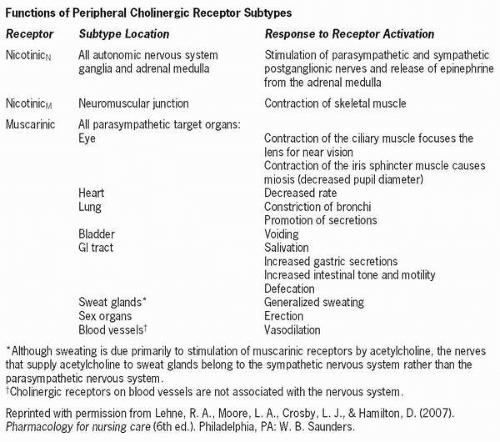The Nervous System
The nervous system is composed of complex interconnections that allow every system in the body to work in a synchronized way. It is responsible for the regulation of the activities of the body’s internal organs and also for the body’s ability to interact with the external environment. It regulates many activities through a complex network of structures that transmits electrical and chemical signals.
The basic structures of the nervous system, called neurons, are arranged into the central nervous system (CNS) (the brain and spinal cord) and the peripheral nervous system (PNS), which is further divided into the somatic nervous system (SNS) and the autonomic nervous system (ANS). The PNS contains the cranial nerves and the spinal nerves. The pathways of the PNS are divided into afferent pathways, which carry the
sensory impulses toward the CNS, and efferent pathways, which innervate muscles or effector organs by carrying impulses away from the CNS. The ANS is further subdivided into the sympathetic nervous system (ANS-S) and the parasympathetic nervous system (ANS-P).
sensory impulses toward the CNS, and efferent pathways, which innervate muscles or effector organs by carrying impulses away from the CNS. The ANS is further subdivided into the sympathetic nervous system (ANS-S) and the parasympathetic nervous system (ANS-P).
 The pathways of the PNS are divided into afferent pathways, which carry the sensory impulses toward the CNS, and efferent pathways, which innervate muscles or effector organs by carrying impulses away from the CNS.
The pathways of the PNS are divided into afferent pathways, which carry the sensory impulses toward the CNS, and efferent pathways, which innervate muscles or effector organs by carrying impulses away from the CNS.Stay updated, free articles. Join our Telegram channel

Full access? Get Clinical Tree


Get Clinical Tree app for offline access



